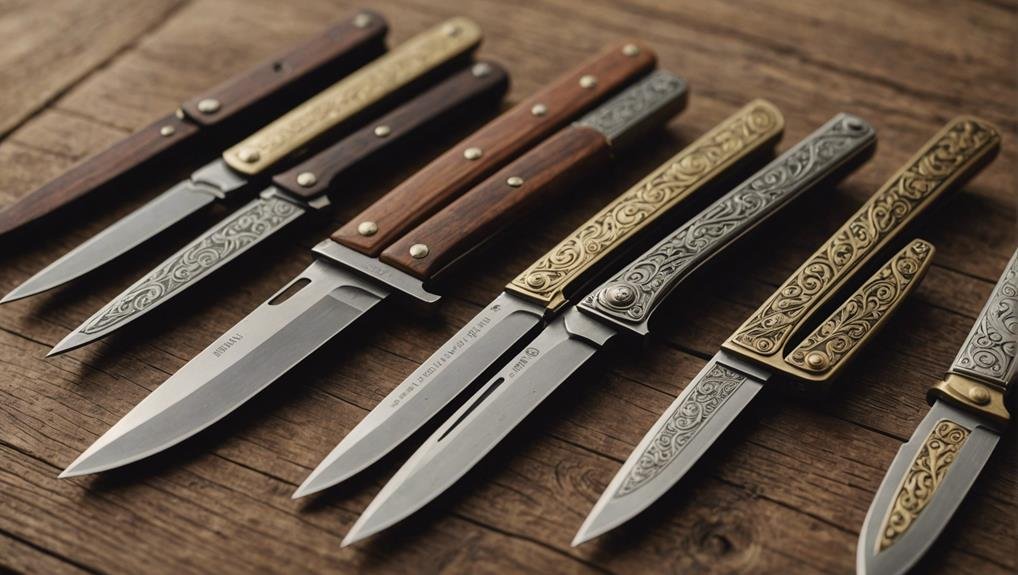Imagine holding a piece of history in your hand whenever you use a traditional pocket knife. These tools, which have been around since the 17th century, have evolved into symbols of practicality and craftsmanship. Each knife tells a story of utility and elegance, from the secure slip joints to the classic materials like Jigged Bone. But what makes these pocket knives so enduring in both function and form? And why do collectors and enthusiasts find them irresistible? Let’s explore how these timeless tools continue to captivate and serve, blending history with modern-day utility.
Key Takeaways
- Traditional pocket knives date back to the 17th century, emphasizing practicality and reliability.
- Popular designs include Stockman, Trapper, Barlow, Congress, and Canoe, which are valued for versatility and aesthetics.
- Slip joints and lockbacks are common mechanisms that ensure blade security and safety.
- Classic handle materials include Jigged Bone, Stag Scales, Delrin, and hardwood, offering durability and unique character.
- Renowned makers like W.R. Case and German Boker are celebrated for their craftsmanship and quality.
History of Traditional Pocket Knives
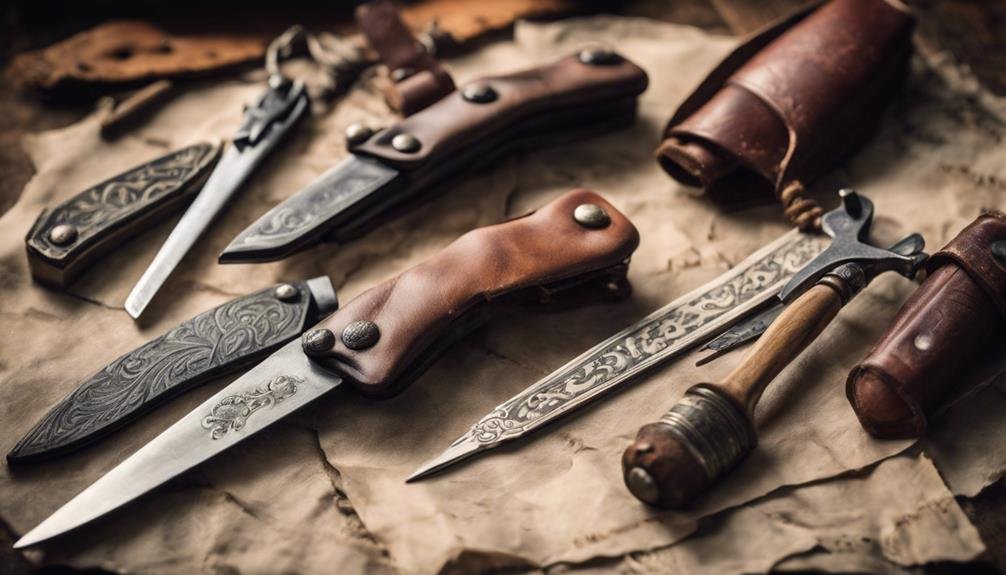
Traditional pocket knives have played a significant role in everyday tasks and self-defense since the 17th century. It is fascinating that early designs focused heavily on practicality and reliability. One key feature that stands out in these classic tools is slip joints. Slip joints allow the blade to open and close without locking it in place, using a spring to hold the blade in the open or closed position.
You’d be surprised at how these knives evolved. Originally, they were simple folding blades that farmers and tradesmen carried for various tasks, from cutting rope to harvesting crops. Over the centuries, the design became more refined, incorporating intricate handle materials like Jigged Bone and Stag Scales, adding durability and a touch of elegance.
Slip joints kept the blade secure when open, making them versatile for utility and occasional self-defense. This classic feature and polished bolsters gave these knives a timeless aesthetic.
As you explore the history of these knives, you’ll appreciate how form and function have been masterfully blended over the years.
Popular Knife Patterns
Among the many designs, popular knife patterns like the Stockman, Trapper, Barlow, Congress, and Canoe stand out for their unique shapes and versatile uses. The Stockman usually features three blades, making it perfect for various tasks.
With its two-blade design, the Trapper is ideal for skinning and general utility. The Barlow is known for its elongated bolster and stout blade, offering durability and a comfortable grip.
The handle material is essential when selecting a traditional pocket knife. Smooth Bone handles aren’t only aesthetically pleasing and provide a comfortable and secure grip. The Congress knife, with its distinctive four-blade configuration, is excellent for intricate tasks, while the Canoe’s shape is designed for easy carrying and versatile use.
Knife enthusiasts appreciate these patterns for their functionality and timeless appeal. Here are three key reasons to contemplate these popular knife patterns:
- Versatility: Each pattern serves multiple purposes, from everyday tasks to specialized uses.
- Aesthetic Appeal: Smooth Bone and other handle materials add a classic touch.
- Craftsmanship: Renowned makers like W.R. Case and German Boker deliver high quality and durability.
Whether you’re a collector or need a reliable tool, these knife patterns are worth mulling over.
Slip Joints and Lockbacks
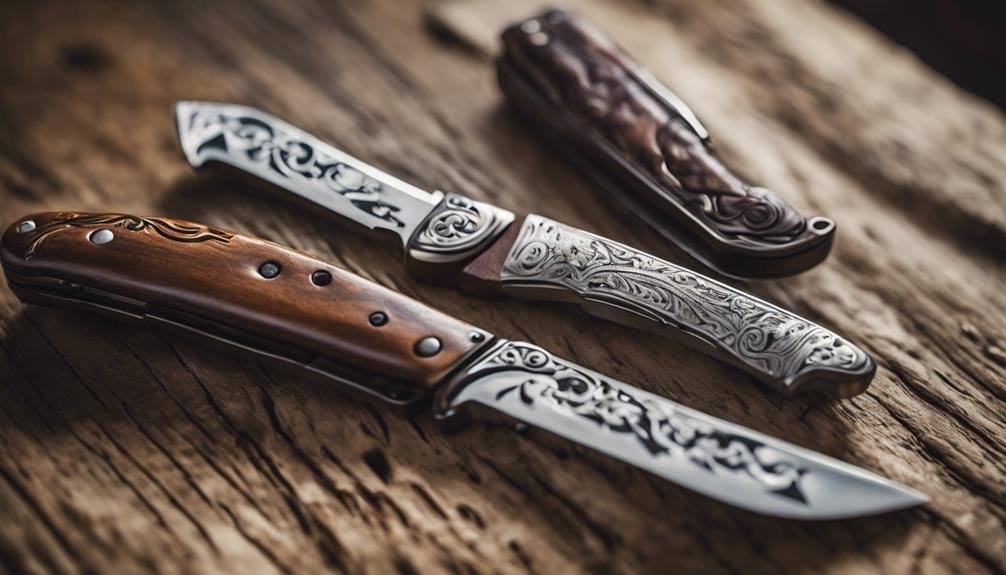
Slip joints and lockbacks frequently stand out for their reliable and straightforward mechanisms, making them popular among traditional pocket knife enthusiasts. Slip joint knives rely on a backspring to hold the blade open. When you use one, you’ll feel the satisfying resistance that keeps the blade in place without a locking mechanism.
On the other hand, lockback knives go further by incorporating a locking mechanism that secures the blade when open, providing added safety and stability during use. These knives often feature polished bolsters and elegant handle materials like jigged bone or stag scales, giving them a timeless look.
Patterns such as the Stockman, Trapper, Barlow, Congress knife, and Canoe designs are commonly associated with both slip joints and lockbacks, offering a variety of styles to suit your preferences. Renowned makers like A.G. Russell Knives, W.R. Case Knives, German Boker Knives, Buck Knives, and Browning Knives produce high-quality slip joints and lockback knives.
Whether you’re looking for a durable everyday carry or a collectible piece, a lock knife from these makers will likely meet your needs with function and style.
Classic Handle Materials
Just as the mechanisms of slip joints and lookbacks define their reliability, classic handle materials like Jigged Bone, Stag Scales, Delrin, and hardwood scales add a timeless elegance to traditional pocket knives. Each material brings unique character and benefits to the knife, making it a practical tool and a cherished possession.
Jigged Bone handles are known for their textured surface, which provides a comfortable and secure grip and enhances the overall user experience. These handles are often dyed in various colors, adding to the knife’s aesthetic appeal.
On the other hand, Stag Scales offer rustic charm and natural beauty. Each piece of stag antler is unique, giving your knife a one-of-a-kind look that tells its own story.
Delrin and hardwood scales are prized for their durability and resistance to wear and tear, ensuring that your knife remains pristine even after years of use.
Here are three key aspects to enjoy about classic handle materials:
- Aesthetic Appeal: Classic materials add visual charm.
- Durability: Delrin and hardwood scales resist wear.
- Unique Character: Stag Scales and Jigged Bone offer individuality.
Choosing the right handle material can elevate your knife from a simple tool to a timeless keepsake.
Stockman and Trapper Knives
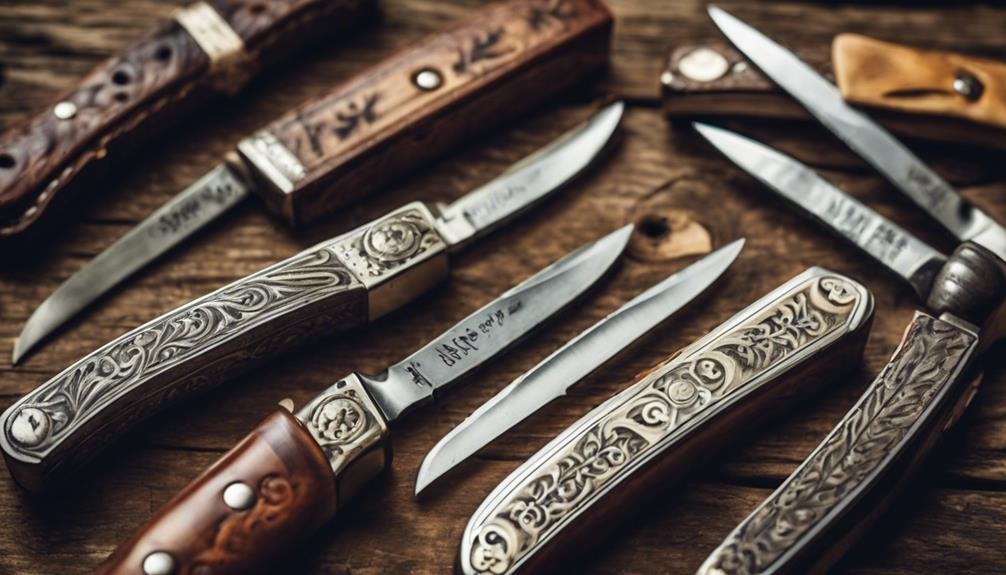
Stockman and Trapper knives are versatile, making them indispensable tools for everyday tasks and outdoor adventures. These classic traditional pocket knives are known for their multiple blades and robust construction. The Stockman knife typically features three blades: a clip, a spy, and a sheep foot, each designed for different cutting tasks. This variety makes it a go-to choice for those who need a multi-functional tool.
On the other hand, the Trapper knife usually has two blades: a clip point and a spey blade. This combination is well-suited for general use and outdoor activities, making it a favorite among hunters and campers. Both knife patterns often showcase exquisite handle materials like jigged bone, stag scales, or hardwood scales, adding a timeless aesthetic that appeals to collectors and enthusiasts alike.
Here’s a quick comparison to help you visualize:
| Knife Type | Blade Types | Ideal For |
|---|---|---|
| Stockman | Clip, Spey, Sheepfoot | Multi-functional daily tasks |
| Trapper | Clip Point, Spey | General use, outdoor activities |
| Handles | Jigged Bone, Stag, Wood | Durability, craftsmanship, appeal |
These traditional pocket knives offer durability, craftsmanship, and historical significance, making them a treasured addition to any collection.
Barlow and Congress Knives
Among traditional pocket knives, Barlow and Congress knives stand out for their unique designs and rich histories. If you’re looking for a simple yet robust knife, Barlow knives are a top choice. Characterized by their single or dual-blade design and distinctly elongated bolster, these knives have been around since the 18th century. Their sturdy construction and straightforward design make them perfect for everyday tasks.
On the other hand, Congress knives offer a different kind of versatility. These knives typically feature multiple blades, including a sheep foot, pen, coping, and Spey blade. This array of options makes Congress knives exceptionally versatile for various tasks, from fine cutting to general utility. Their compact design packs a lot of utility into a single tool, making them a favored choice for those who appreciate function and form.
Here are three key points about these traditional knives:
- Barlow Knives: Known for their simplicity and durability.
- Congress Knives: Feature multiple blade types for versatile use.
- Historical Significance: Both types date back to the 18th century, showcasing a rich heritage.
Barlow and Congress knives prove their worth as enduring tools with these features.
Collecting Traditional Pocket Knives

Exploring the practical uses of Barlow and Congress knives, collectors find immense value in traditional pocket knives for their classic designs and historical significance.
When you immerse yourself in collecting, you’ll discover that limited edition and special-release traditional pocket knives are particularly sought for their rarity and unique features. Whether a Swiss Army Knife Red or an intricately designed Barlow, these pieces often showcase exceptional craftsmanship and quality, making them highly desirable.
As a collector, you might focus on specific brands or patterns to build a thorough collection. For instance, you could seek out all variants of the iconic Swiss Army Knife Red or aim to acquire different patterns of Congress knives. This focused approach not only helps in creating a themed collection but also adds depth to your hobby.
Collecting traditional pocket knives can be incredibly rewarding. It involves researching historical contexts, networking with fellow enthusiasts, and attending knife shows and events. These activities enhance your knowledge and provide opportunities to find rare knives and connect with a community that shares your passion.
Embrace the hunt and cherish the stories each knife brings to your collection.
Maintenance and Care Tips
Taking proper care of your traditional pocket knife guarantees it stays functional and maintains its value over time. Regular maintenance is essential, especially for a folding knife black model, to ensure it remains in top condition. Follow these tips to keep your knife in pristine shape:
- Clean and Dry: Clean the blade with a soft cloth and mild soap after each use. Dry it thoroughly to prevent rust and corrosion. Avoid harsh chemicals or abrasive materials, which can harm the blade and handle.
- Oil the Blade: To preserve the blade’s sharpness and prevent rust, apply a light coat of oil. A few drops of mineral or specialized knife oil will do the trick. Be sure to wipe off any excess oil to avoid attracting dust or dirt.
- Proper Storage: Store your knife in a dry environment to prevent moisture damage. When not in use, keep it in a sheath or protective case. This helps prevent accidental damage and keeps the blade sharp.
Where to Buy
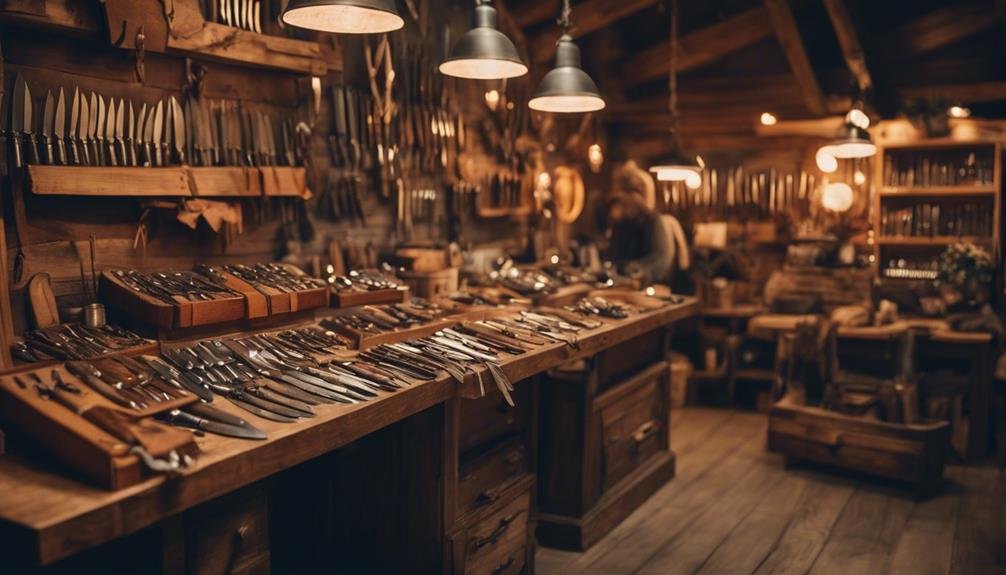
When you’re ready to purchase a traditional pocket knife, C. Risner Cutlery is a top destination offering diverse, high-quality options. They feature a wide range of popular knife patterns, such as Stockman, Trapper, and Barlow, guaranteeing you find the perfect fit for your needs.
At C. Risner Cutlery, you’ll discover knives crafted with handle materials such as Jigged Bone, Stag Scales, and hardwood, which provide a classic and timeless aesthetic. If you’re looking for something more durable and modern, consider their selection of knives with Canvas Micarta handles. These handles offer a blend of robustness and style, making them a great choice for everyday carry.
Renowned makers like W.R. Case Knives and Buck Knives ensure that every knife you purchase from C. Risner Cutlery meets high standards of quality and craftsmanship. Additionally, take a moment to explore Cattleman Cutlery for designs that emphasize timeless elegance and classic appeal.
Whether you’re a seasoned collector or a first-time buyer, C. Risner Cutlery provides an extensive and curated collection that caters to all tastes and preferences in traditional pocket knives.
Conclusion
Immerse yourself in traditional pocket knives, and you’re not just obtaining a tool—you’re connecting with centuries of craftsmanship and history.
With their dependable mechanisms and classic handle materials, these knives offer practicality and timeless elegance.
Whether you’re intrigued by the Stockman, Trapper, Barlow, or Congress patterns, each piece tells a story.
By collecting and caring for these knives, you’re preserving a legacy.
So, delve into this fulfilling hobby and appreciate the beauty and functionality of traditional pocket knives.
FAQs
What makes traditional pocket knives unique?
Traditional pocket knives are unique due to their timeless designs, historical significance, and craftsmanship. They often feature classic mechanisms like slip joints and lockbacks and are made with materials like Jigged Bone and Stag Scales, offering functionality and aesthetic appeal.
How should I maintain and care for my traditional pocket knife?
To maintain your traditional pocket knife, clean and dry the blade after each use, apply a light coat of oil to prevent rust, and store it in a dry environment. Regular maintenance, such as sharpening the blade and ensuring the handle is in good condition, will keep your knife in top shape.
Where can I buy high-quality traditional pocket knives?
You can buy high-quality traditional pocket knives from reputable retailers like C. Risner Cutlery. They offer a diverse selection of knives from renowned makers, such as W.R. Case Knives and Buck Knives, featuring classic patterns and premium handle materials.
